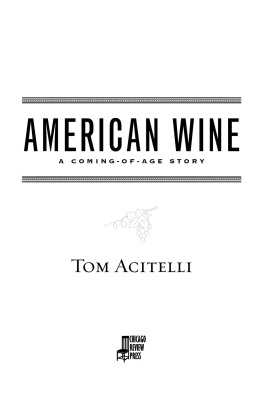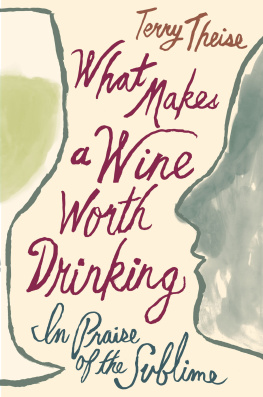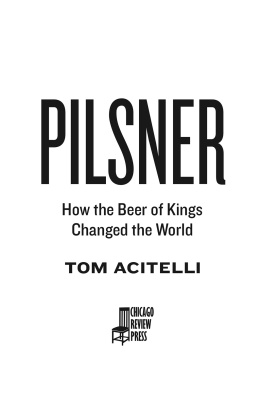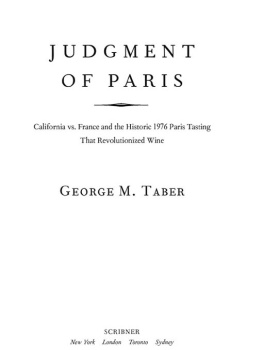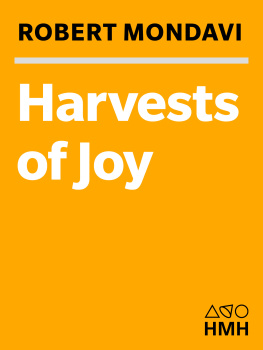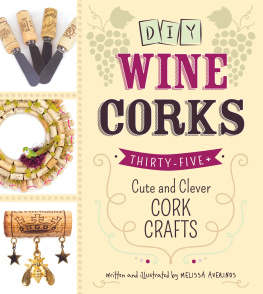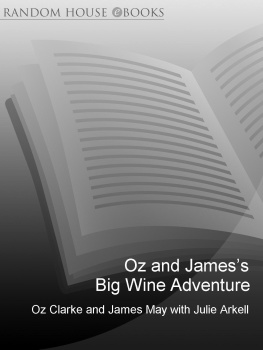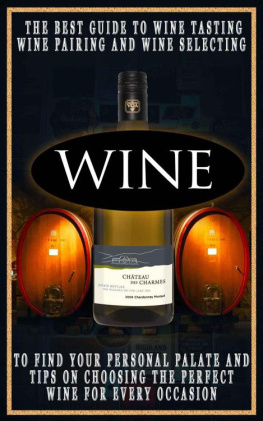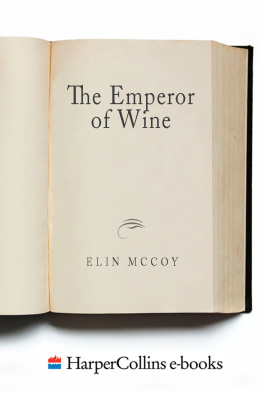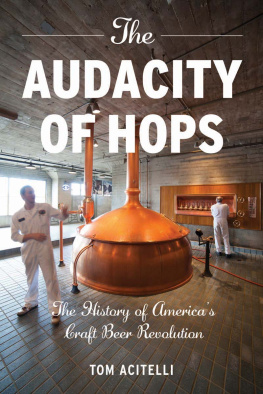PROLOGUE
The Worlds Biggest Wine Market
2010 | Brooklyn
I t was 2010, and my wife and I were in a classic red-sauce joint in Brooklyn, one that had thus far mercifully escaped the waves of gentrification sweeping the borough. The elderly waiter asked us what sort of wine we would like with our pastas. Being a worldly Manhattan transplant (via North Carolina), I asked for a wine listthe usual pages and columns listing grape types and vintages, the sorts chockablock adjectivally redolent descriptions of what I might taste and smell; and, of course, containing the prices. Those prices! Banes of first dates, always scaling upward in what seemed like a maddeningly arbitrary manner that you never, ever encountered with beer.
The waiter frowned.
The wine list, please, I repeated.
Wine, yes, he said in a heavy Italian accent, smiling as he seemed to understand. We have red, white, and rosyou know, pink-a.
Poor man. I knew better, didnt I? Wine, especially the sort you ordered in restaurants, was and always had been infinitely more complex. Everyone knew that. Where were the grapes, the vintages, the prices? Where were oaky and jammy and their battalions of descriptive chums? Here, in this red-sauce throwback, where the menu, too, was simple, we were being offered three generic choices.
Not until I started researching this book, the first history of American fine wine since its rise in the early 1960s, did I realize that that elderly waiter was on to somethingand that I and other consumers had been woefully misled.
About three years after that Brooklyn encounter, just as I commenced my research in earnest, the New York Times published an article about what the writer called the wine-ification of beer, the push by many brewers to make their product as respectable to pair with braised short ribs as is a nice Chateauneuf-du-Pape, and at a price to match. The article cited the many American craft breweries packaging their beers in twenty-two-ounce, wine-like bottles and the rash of restaurants sporting such bottles along with those of wine.
All hell broke loose among the craft beer commentariat. Fans and producers inundated the articles online version with comments and soon took the debate to beer blogs and trade websites. I knew enough from my last book, The Audacity of Hops: The History of Americas Craft Beer Revolution, to know that beer in twenty-two-ounce bottles was nothing new; it dated from at least the early 1990s, when newer breweries resorted to the packaging to save money (bigger bottles meant fewer bottles to fill). I also knew that beer aficionados had been pairing their brews with food since at least the 1970s in the United States, and that restaurants had begun introducing the practice about ten years later.
What I did not knoweven after a couple of years immersed in food and drink researchwas what rankled some in the American craft beer movement: that wine, however fine, was the wrong measure for beer, however crafted. Why? Because fine wine in the United States, like craft beer, was still coming into its own in the second decade of the twenty-first century, and it was still trying to overcome the consuming publics decades-old perception of it as either fortified hooch or the stuff Europeans (or their American children) drank. The old American term for an alcoholic was wino, and theres a reason for that, thundered Garrett Oliver, the well-respected brewmaster of the Brooklyn Brewery, in a statement responding to the Times article. Until fairly recently, the concept of American-made fine wine, or fine wine in general, was simply foreign to many in this nation (as was, for that matter, the concept of craft beer, the sort made with traditional ingredients in small batches by independent brewers).
Still the perception held all the way into the pages of the national newspaper of record that wine in America was the beveragewas the foodstuff, periodagainst which all others were, and should be, measured in terms of quality, value, and desirability; and, more important, that American consumers had always taken this for granted. No popular history book, I soon discovered, had drawn that relatively straight (though still revolutionary) line from about the late 1960swhen fine wine, especially American-made fine wine, was as exotic in the United States as a beer from a brewery not called Anheuser-Buschto our current cornucopia of grape expectations. None, either, had paid much attention to the rise of tangential fields, such as wine bars and sommeliers, or the intersection of pop culture and American fine wine; those tended to be explained away as inevitable offshoots, a kind of build-it-and-they-will-come by-product of fine wine, when, in fact, their growth was no more assured than fine wines in general. Indeed, I was surprised to learn that even those working decades in the industry were unfamiliar with some of the events, turning points, and personalities I will recount (though American wine professionals can be forgiven for mixing up their names and datestheyve been awfully busy lately). Finally, no book until now has yet to accurately explain why Americans have largely come to prefer lusher, stronger wines. Contrary to near-canonical myth, it is not because of the opinions of one particular critic from suburban Baltimore.
This book is the first of its kind: a popular history of American fine wine that draws a clear line from the late 1960s through today, connecting the dotsthe people, the places, the events, the trends, and the simple twists of fate.
From the end of Prohibition in 1933 through the 1960s, Americans really did face essentially only three choices, the same ones the waiter in Brooklyn annunciated: red, white, and ros (a.k.a. pink), the latter open to all sorts of syrupy sweet interpretations. It is a difficult thing to believe in our era of wine-laden supermarket aisles, wine critics at most major newspapers, entire magazines dedicated solely to wine and its wonders, and even television shows and movies hinging on fine wine. If US consumers wanted something better, they usually had to turn to France or, in a pinch, Italy. American-made wines were generic, nondescript, made cheaply to be sold cheaply in screwtop jugs or straight from the tap in whatever vessel would hold them; and they werent that popular, even with Americans themselves and especially with foreigners, who knew better.
Moreover, if Americans drank wine at all, they drank fortified varieties, those designed to wallop rather than to wow. In the first three decades-plus after the end of Prohibition, no new wineries of note opened in Californias Napa Valley, which would become the nations leading wine-making region; only a handful throughout the land crafted what this book will call fine wine. I was surprised to learn of grapes such as Alicante Bouschet and Carignan, cheaper varieties that undergirded most of the wine made and sold in the United States before the 1960s.

